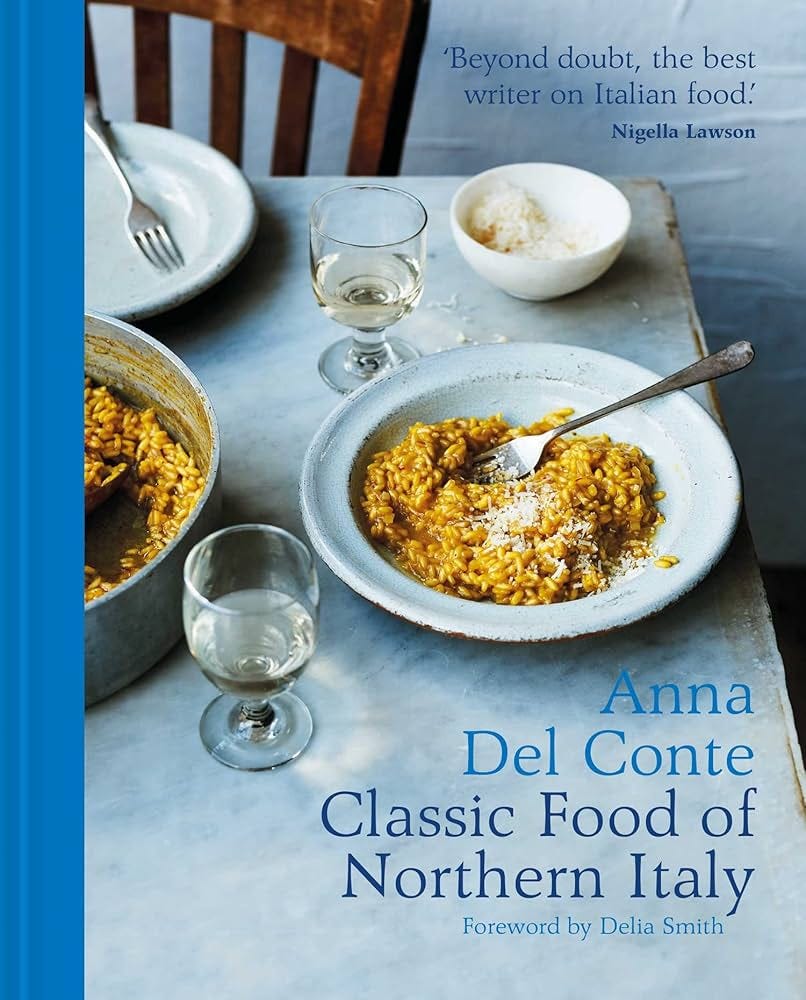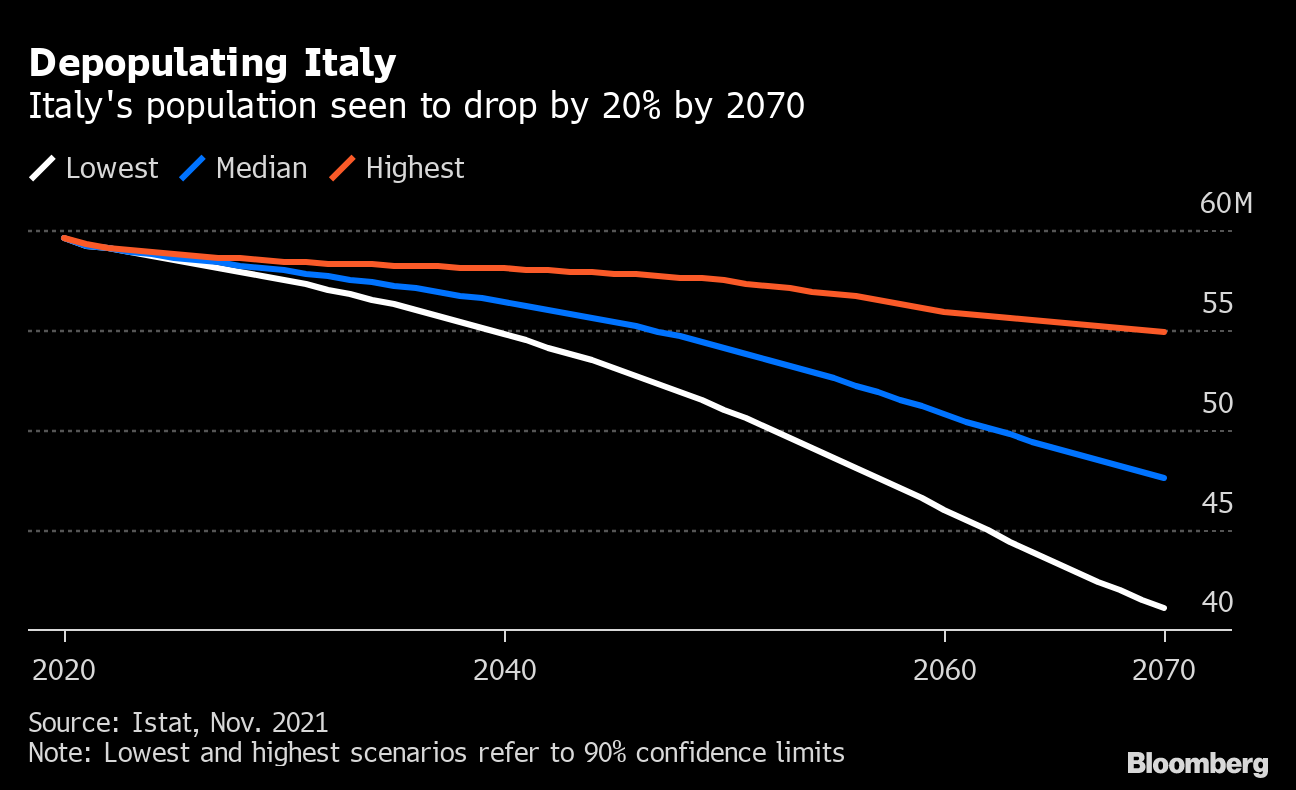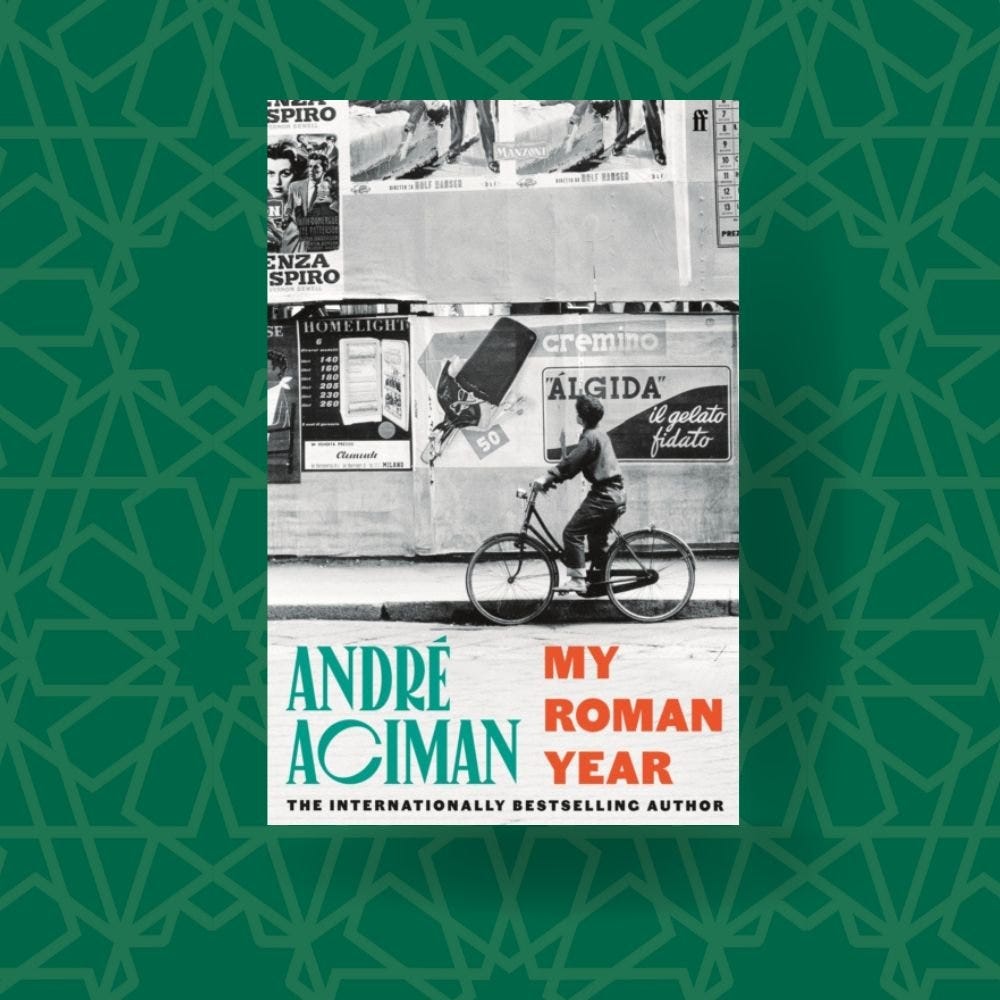Italy's Demographic Winter
Plus, a setback for the ex-GKN workers and a sexy new memoir by André Aciman
For decades now, politicians and pundits alike have been fretting over Italy’s so-called “demographic crisis’, a toxic combination of ageing population and declining birth rate which is placing strain on welfare, pensions, work and culture. Well, the latest data is not encouraging. In 2023 Italy recorded the lowest birth rate since records began in 1861. Last year 379,890 babies were born, a figure that, apparently, translates into just 6 per 1000 inhabitants. Taken in isolation, this figure is indeed alarming, and you can expect Meloni to make repeated reference to it as she justifies her anti-abortion stance, anti-LGBTQI+ policies and endless propagandizing of the traditional nuclear family. It’s worth remembering, however, that there are other solutions to the crisis. The first, as John Springford argued for the FT back in May, would be to embrace migration: to allow more migrants into the country and to permit greater rights to working age people hailing from abroad. A second solution, as Tobias Jones pointed out back in January, would be to entirely reject the idea that elderly people are a “problem”, and youth the “answer”, by focusing less on demography itself than on investing, proactively, in robust healthcare and public services. This is a complex issue, of course, but it’s not rocket science. As Jones rightly concludes: “after a century of failed birthrate policies, perhaps [this is] the wisest course: to accept that the population pyramid is now inverted and draft policies that take account of that reality, rather than hope to reverse it.” Check out his full argument here.
Since 2021 the GKN auto parts plant in the Florentine suburb of Campi Bisenzio has been occupied by workers who were laid off, without warning, by the British multinational firm. This is the longest factory occupation in Italian history, and not only that. Over the past 36 months, 422 workers have successfully crowdfunded over a million euros with an ambition to restart production on their own terms, making solar panels and electric bikes rather than car components. Frankly, it’s an extraordinary story. I’m sorry to report, then, that last week the initiative encountered a major setback when the news broke that GKN’s local partner actually sold the factory back in March to two real estate companies, Tuscany Industry srl (Ti) and Sviluppo Immobiliare Toscana srl (Sit), without informing the occupiers. While details are too complex to go into here, the utopian vision now looks set to collapse. “There is no time to waste,” says Dario Salvetti, spokesperson for the workers: “our industrial plan is well structured, it is based on purchase order hypotheses linked to the present moment that must be implemented by 15 November […] we are proposing an innovative model of reindustrialization against speculation, and if nothing happens someone will have to explain to the country why a new renewables hub hasn't been created in Campi Bisenzio." WIRED Italy has the full story [ITA only I’m afraid]. For an update from happier times, check out the video below by Greta Thunberg, who joined the GKN occupation for an assembly last week, just before the news broke.
I encountered a bizarre story this week about an unlikely breed of social media influencer who is, apparently, taking the Italian internet by storm. Luca Romano – aka “The Atomic Advocate” – is a maths and physics high school teacher who is using his X and Instagram accounts to convince young people that opposing nuclear power is “nonsense” that “prevents the world from tackling the climate crisis.” This is, of course, a contentious topic. Italy closed its plants in 1987 in wake of the Chernobyl disaster, and in an era of sabotage and hybrid warfare there is still, certainly, a case for respecting that caution. In general, however, the country seems to be moving in the opposite direction. As I’ve previously reported, Meloni’s government is due to sign legislation later this year to open dozens of new nuclear plants that she hopes will produce 22 percent of the country’s energy by 2050. The real point of this story, however, is not just energy policy. It’s about social change. Romano’s intervention, his rise to fame, and his popularity among Gen-Z green activists is, after all, a fascinating example of a rare convergence between the interests of the far-right government and young progressives. Admidst a quagmire of superficial op-eds about clashes of generations, ideas, and ideologies, this feature by POLITICO really gets beneath the surface of what’s going on. So give it a read, and give it some thought.
Arts and Culture: Eros and Incantation
André Aciman, author of the bestselling novel Call Me By Your Name (2007), has just published a new memoir about a year he spent in Rome as a teenager in the mid 1960s, and the mark the city made on his psyche, his life and, of course, his literary work. My Roman Year has had mixed reviews to put it politely, with some critics irked by the author’s flowery language and apparently self-indulgent tone (though, still, I wonder if this isn’t this a risk with 99% of memoirs….) But I digress. Based on the PR, the book’s second half certainly seems worth a read. It tells the story of how Aciman, inspired by an experience with a sex worker in Paris, headed back to Italy primed and ready to embark on a lusty teenage adventure though the Roman nightlife of the time. The results were mixed, inevitably, but his subsequent year of “casual” encounters seems to have left a profound and inspiring mark on his life nevertheless. This is a book about sex, yes. But, as the title suggests, it’s also about Rome itself, a city which exerts its own kind of magnetism and which, on a good day, as I’m sure many readers here can attest, offers its own kind of mystical eros. Buy the book straight from the publisher here if you’re interested.
More Italian eros this week as Paolo Sorrentino’s latest film Parthenope hits the big screen. Critics are really having a field day with this one. “Lush”, “sensual”, “dripping with desire,” read a few of today’s Italian headlines. In the international press Peter Bradshaw has called the film “a facile, bikini-clad self-parody,” David Roony remarks that it’s “too rich to digest” and Tim Roby, in a very funny review for the Telegraph, has labelled it “an ode to the side boob.” Now, I confess, I too find myself frustrated sometimes by Sorrentino’s sometimes crass conflation of art and softcore pornography. But let’s be honest, he’s not as bad as all that. Yes, there is gratuitous nudity, and it’s all very male-gaze heavy; but the effect is intentional and well-executed, even when it’s in poor taste. Then there are the visuals. Sorrentino’s long-time collaborator, Daria D'Antonio, is, to my mind, one of the best cinematographers working in the world today. Her style is entirely and uniquely her own, and every shot she takes is a gorgeous tribute to Italian life and style. Based on the latest trailer, and for these reasons alone, I reckon this release will offer plenty to enjoy (so long as you’re not expecting a plot with any actual depth, of course…)
Recipe of the Week: Risotto alla Milanese
Ah, risotto Milanese. Truly one of the most delectable of all Italian cold weather piatti. After months of tomatoes and cucumbers, aubergines and peppers it feels pretty satisfying to prep-up something carby, cheesy, and generally, unashamedly, goloso. Some trace this dish’s origins as far back as the Renaissance, when a Dutch painter, Mastro Valerio, apparently became fixated on the colour yellow while working in the city and so mixed saffron into his simple rice lunch. Another legend attributes it to the genius of Milan cathedral’s 16th Century glazier, who sought to elevate his humble minestra to a kind of godly delight. Whatever you choose to believe, this has been a classic in cookbooks since the 1800s, and with good reason. All you need is quality stock, quality rice, quality cheese, quality zafferano and – admittedly – a strong stirring arm. Personally, I tend to follow Giorgio Locatelli or Anna del Conte’s instructions, but there are hundreds of recipes out there based on the same principles. Do remember, though, while risotto milanese is great in its own right, it also works brilliantly as a “canvas” for other toppings. Serve with ossobuco if you’re feeling carnivorous. For a lighter option add some grilled fennel as Olivia Cavalli brilliantly suggests in her book Stagioni. Enjoy!

I’m Jamie Mackay, a UK-born, Italy-based writer, working at the interfaces of journalism, criticism, poetry, fiction, philosophy, travelogue and cultural-history. I set up ‘The Week in Italy’ to make a space to share a regular overview of the debates and dilemmas, innovations and crises that sometimes pass under the radar of our overcrowded news feeds, to explore politics, current affairs, books, arts and food. If you’re a regular reader, and you enjoy these updates, I hope you’ll consider becoming a supporter for EUR 5.00 per month. I like to think of it as a weekly catch-up chat over an espresso. Alternatively, if you’d like to send a one-off something, you can do so via PayPal using this link. Grazie!





